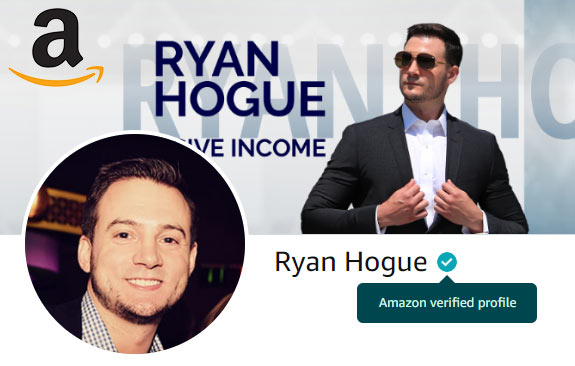I'm on record as a believer that you're much better off selling on established e-commerce marketlpaces, at least initially when starting an e-commerce business.
Think about it, which would you feel more comfortable making a purchase from:
- An established, recognized, trusted brand like Amazon.com
- Or a website you've never heard of that has the same product for $2 cheaper
The vast majority of people would happily pay the additional two dollars for peace of mind.
Not to mention, these two options were not created equal!
Amazon accounts for close to half of all e-commerce sales in the United States [Source].
That means that when people want to buy something online, many of them go straight to Amazon.com. Many other go to Google, which eventually sends them to Amazon.
This isn't mean to imply that Amazon gets every sale - I'm still a fan of selling on additional online markets as well.
Online Marketplace Fees
If we're going to list our products for sale on the "big" e-commerce marketplaces, there will be fees to pay. Each marketplace has it's own fee structure, and they are usually pretty complicated & not all that straightforward. That said, as of writing this, they roughly work out to:
- Amazon: 15% - 20%
- Etsy: 10% - 12%
- Ebay: 10%
I think of it as a cost of doing business and try not to let it bother me. We are profiting off of their established brand name, so it's mutually beneficial.
Now that we've covered fees, lets compare some of the major marketplaces.
Online Print on Demand Markets
If I had to prioritize the options for online marketplaces, I would do it as follows:
Tier 1 Markets
Amazon Merch is in a tier of it's own & for good reason.
It functions as both a production partner (where everything is done for you after a sale), it's free to participate, & all listings are available for sale on the world's largest e-commerce website!
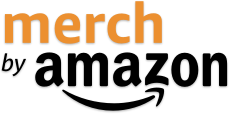
π° Monthly Cost: 100% FREE
According to Empire Flippers, Amazon Merch accounts have sold for as much as $234,798.
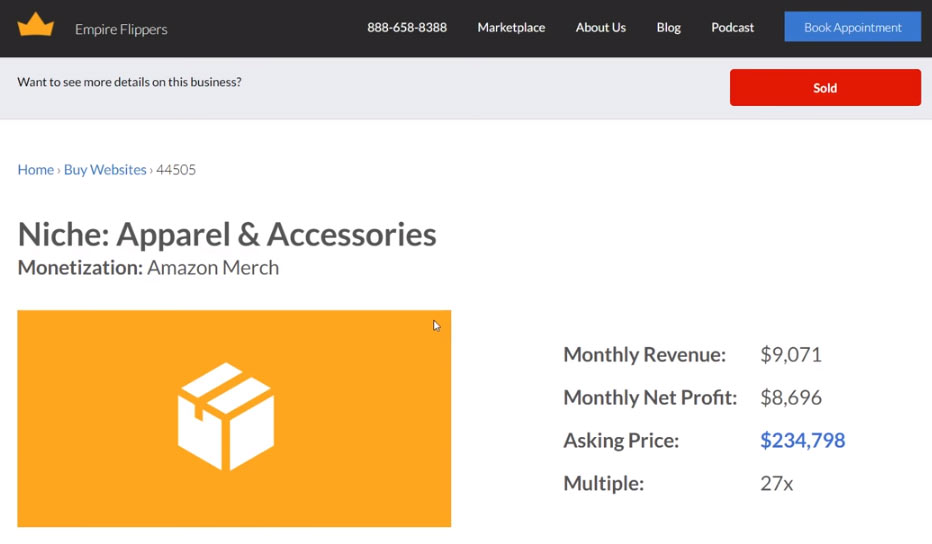
* click to expand
Amazon Merch, or just "Merch" for short is an incredible opportunity for a number of reasons:
- Merch listings Prime eligible, drastically increasing the potential customer base.
- It's 100% FREE. Unlike almost ever competitor out there, Amazon Merch will deduct product costs from the order fee and pay the seller a royalty. You never have to provide them a credit card.
- Ease of use: Most competitor platforms require API integrations with the various marketplaces, whereas Merch lets you list directly to Amazon's massive catalog (without opening a Seller Central account).
- The massive user base: Tens of thousands of people upload to Merch, which in turn means there are tons of helpful communities & resources available to learn from.
- Two negatives about Merch: #1 Amazon provides little to no support at all to Merch sellers #2 The automated system in place to prevent infringement is very rudimentary and not documented well at all.
Honorable mention: Amazon Kindle Direct Publishing (KDP), which is basically Amazon Merch without upload limits & instead of selling apparel you're selling books.
Tier 2 Markets
The tier 2 markets represent great opportunities to make money selling print on demand products online, but if we evaluate them relative to each other, some simply have to be distinguished above their competition (hence why Amazon Merch sits alone at the top spot).
Amazon FBM means "fulfilled by merchant" and means we'll be paying $39.99/mo for a professional Amazon Seller Central account. Etsy has no recurring fees associated with having a seller account, but there are recurring fees associated with each product listing.
We will integrate a fulfillment partner (Printful being my preferred choice) with our seller accounts so that we can easily create new products & following a sale, Printful will automatically download the sale, produce the product, & ship it to our customer.
What's not to love?
Redbubble functions similar to Amazon Merch where it's its own marketplace & production partner, combined with the high web traffic it gets made it a Tier 1 consideration, but compared to Merch there is too much of a drop off in web traffic to place it alongside Merch.

π° Monthly Cost: $39.99
Amazon.com is the world's #1 e-commerce website and should be prioritized as a destination for print on demand sellers. Follow the customers!
According to Feedvisor: based on a survey of more than 2000+ US customers, 89 percent of buyers agree that theyre more likely to buy products from Amazon than other ecommerce sites.
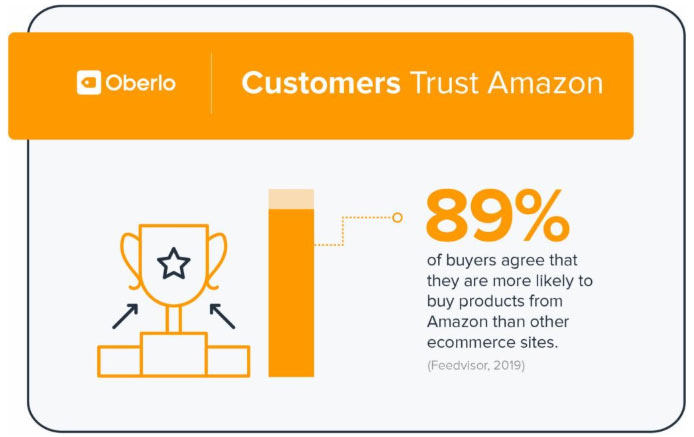
* click to expand
- The monthly fee $39.99/mo is the highest fee of any online marketplace (but there is no per-listing fee)
- Massive potential Amazon accounted for almost half of all online transactions in the United States in 2019
- Capitalize on customer loyalty Amazon's a trusted brand name that people actually pay to shop on. You read that right - Amazon Prime members pay for that luxury.
- Two negatives about Amazon Seller Central: #1 It's not easy to use; #2 seller support is often not well-versed enough to help solve problems; #3 high transaction fees
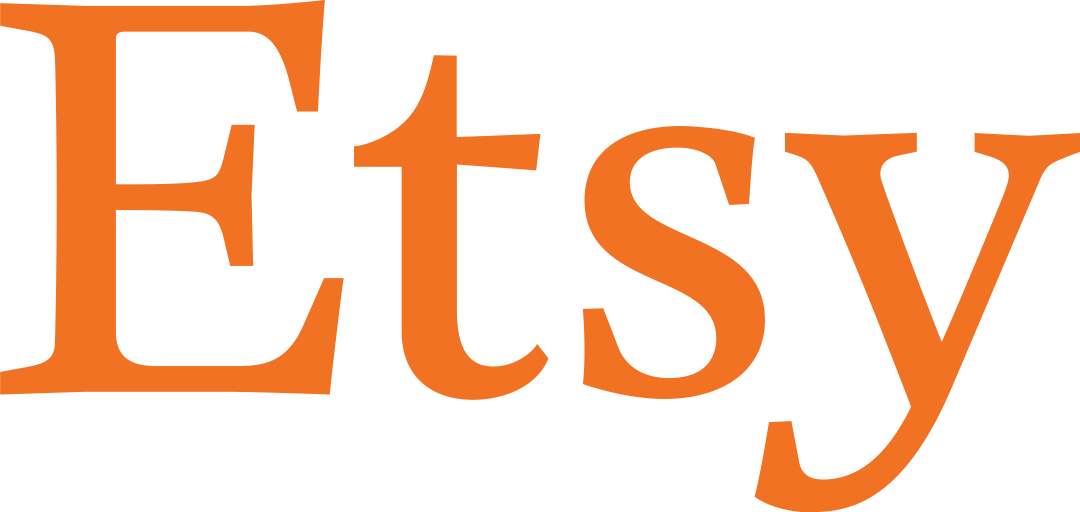
π° Monthly Cost: $0.20 per listing every 3 months
Etsy is an established, trusted brand amongst e-commerce marketplaces and one where customers seem to be willing to spend a little more on when it comes to average order value.
More people shopped on Etsy in 2018 than ever before: There were 17% more buyers than 2017. [source].
*31.7 million as of Sep 30, 2017 | **37.1 million as of Sep 30, 2018
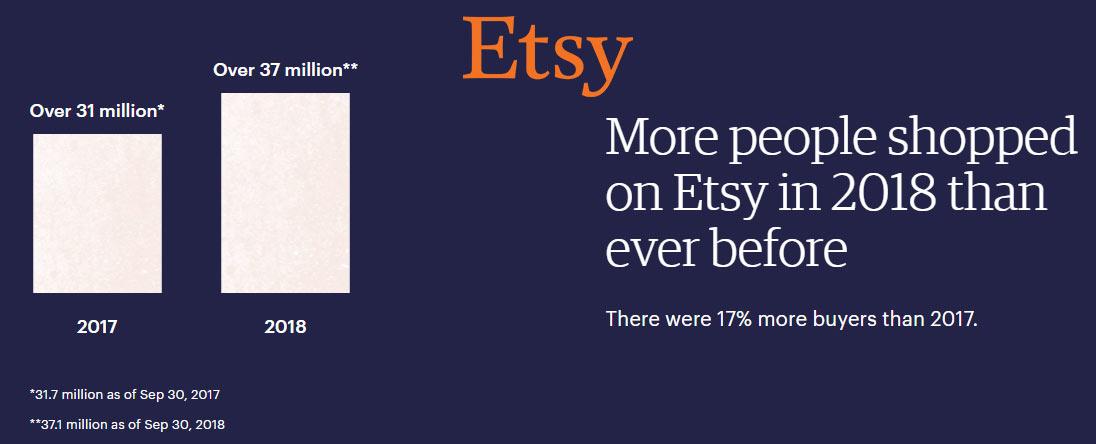
* click to expand
- Over 40M active shoppers browse Etsy regularly to make online purchases (Source)
- Etsy listings rank well on Google which can bring additional traffic to your product listings
- Etsy is a trusted brand where the public perception is that they bring a handmade, personal touch to the products sold on their platform
- Two negatives about Etsy: #1 $0.20 listing fee w/ quarterly annual renewal

π° Monthly Cost: 100% FREE
Redbubble is another print on demand platform that can hold its own with the best of them, namely because it's 100% & it lists products on its own marketplace that is integrated with Google Shopping. Here are my thoughts on Redbubble:
Redbubble had 20.8M total visits in October, 2019 [source].

* click to expand
- Google Shopping: Listing a product on Redbubble means that your product will show up for sale on Google Shopping. Given that Google is the most trafficked website in the world, this is a great way of getting organic traffic.
- Easy to use UI The Redbubble user interface is clean, intuitive, and easy to use. It's more tedious than Printful, Merch, & Gearbubble if you just want to upload a t-shirt design, but if you want to place your design on multiple products, they make it very easy to do all at once.
- Integration: One downside is that Redbubble doesn't integrate with other online marketplaces, so you are essentially uploading your designs to products that will only sell through their marketplace. Sometimes I manually cross-list products such as popular stickers onto other marketplaces, but I'm forced to manually create the order to the customer in an online arbitrage fashion when they sell.
- Pricing: I don't know if this is more positive or negative, but you can't control your profit margins on a per-design basis. Rather, you control your margins on a per-product basis and you do so by entering a % markup that will instantaneously be applied to all of your product listings (making it hard to target price points like $19.99).
- Three negatives about Redbubble: #1 Inability to control product costs on a per-product basis (& cost control lacks flexibility) #2 Lack of integrations with other marketplaces #3 People steal each other's work from Redbubble all the time
Tier 3 Markets
The tier 3 markets should be prioritized behind tiers 1 & 2.
They each received this classification because of their organic traffic and/or reputation amongst customers.
In short: Ebay has great traffic but a poor reputation in many customers' eyes, as people still think of it as either an auction website or a place to get products super-cheap from China.
The rest are online print on demand marketplaces that serve as both marketplaces + fulfillment partners, making them grade extremely high in the "ease of use" category, but they are competing with the e-commerce behemoths (& each other) for web traffic the same customer base.

π° Monthly Cost: $0.35 per listing per month
Ebay has a bit of a negative perception as an online marketplace, as many people still perceive it as an auction website. It still boasts great organic traffic though, and should not be overlooked.
You can find live statistics about Ebay's reach here.
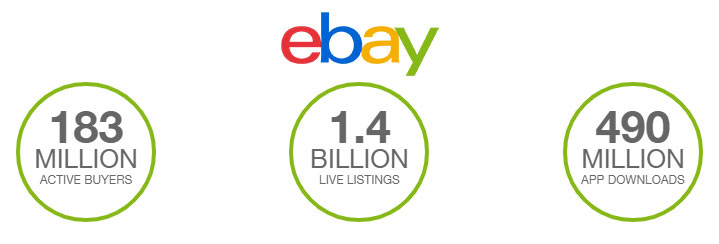
* click to expand
- It's more popular than you think Ebay has 183 million users worldwide as of 2019 (Source)
- The mobile app is popular too Ebay's mobile app has been downloaded a total of 490+ million times (Source)
- Selling internationally is easy Ebay has a global shipping center in Kentucky that allows you to offer products globally at no added cost to you, the seller
- Two negatives about Ebay: #1 it's still widely perceived to be an auction website #2 savvy people who regularly shop on Ebay are typically looking for the best deal (as in, low prices)
The following are all-in-one solutions: both marketplaces & production partners
Honorable mentions: Teepublic, Teespring, Spreadshirt, Zazzle, Society6.

















